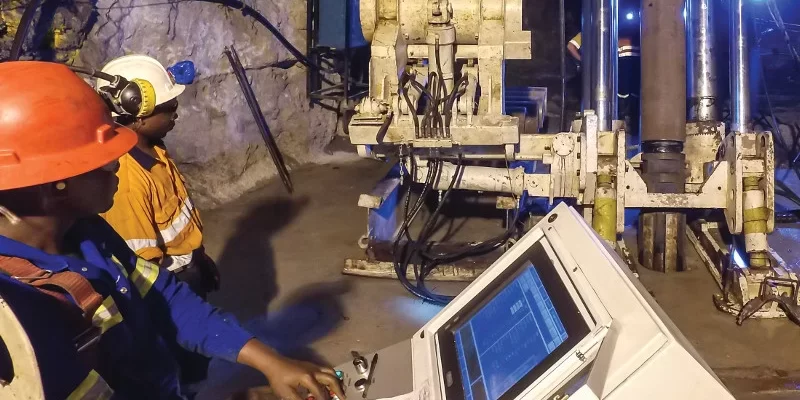Kibali, the largest gold mine in Africa, has become one of the continent’s greenest and most impressively automated operations.
It continues to drive local economic development and provides ongoing funding for the reintroduction of white rhinos into a UNESCO World Heritage site in the Democratic Republic of Congo (DRC).
On the clean energy front, the majority of the electricity powering Kibali is already sourced from its three hydropower stations.
Once Kibali’s new 16 MW solar power plant and additional battery energy storage infrastructure are commissioned, the overall renewable electricity supply is expected to increase from 81% to 85%.
Furthermore, the additional battery energy storage infrastructure is designed to back up the hydropower supply during the region’s dry season. For six months of the year, the mine’s electricity demand will be met entirely by renewable energy.
“Bearing in mind that Kibali is also a leader in automation, the mine is a real role model for mining in Africa,” emphasized Barrick president and chief executive Dr. Mark Bristow during a media briefing in the DRC.
Located in the remote northeast of the DRC, Kibali, built in partnership with the government, has opened up a new mining frontier and advanced the development of a thriving local economy.
The total in-country investment to date, including royalties, taxes, dividends, and payments to local suppliers, amounts to $4.7 billion.
The mine’s community development fund contributes 0.3% of revenue to the implementation of community development projects, with 44 new projects launched last year.
The mine’s new Cahier des Charges scheme has also initiated 11 projects, with seven nearing completion. Kibali’s funding for these projects over the last five years has reached $8.9 million.
Regulations introduced in 2018 require mines to outline a clear and financially-provisioned five-year plan for local social development – a Cahier de Charge – in consultation with local communities and stakeholders.
“We’re also continuing our support for biodiversity with plans underway to introduce additional white rhinos to the Garamba National Park,” Bristow enthused in a release to Mining Weekly.
Last year, 16 white rhinos were brought to Garamba, with a further 60 scheduled for delivery over the next three years.
An environment has been created where white rhinos can exist safely in the park, supported by professional staff and qualified veterinarians who regularly monitor their acclimatization.
Garamba has more than 500 full-time staff and hundreds of additional employees on contract, including law enforcement teams and dedicated community personnel.
The park supports more than 9,000 community members in entrepreneurial enterprises such as beekeeping, fish and poultry farming, as well as four hospitals with a capacity for 12,000 patients.
Operationally, Kibali achieved its production guidance for 2023, setting a new annual throughput record in the process. Gold production in 2023 was 763,000 oz.
Also on track to replace the reserves mined during the year, Kibali is seen as a standout example of what can be achieved through commitment to partnering with host countries and local communities.
Barrick has expressed strong intent to continue working with the government to grow its investments and development projects.
The Barrick-operated mine is owned by Kibali Goldmines SA, a joint venture company owned 45% by Barrick, 45% by AngloGold Ashanti, and 10% by Société Minière de Kilo-Moto.
![]()




